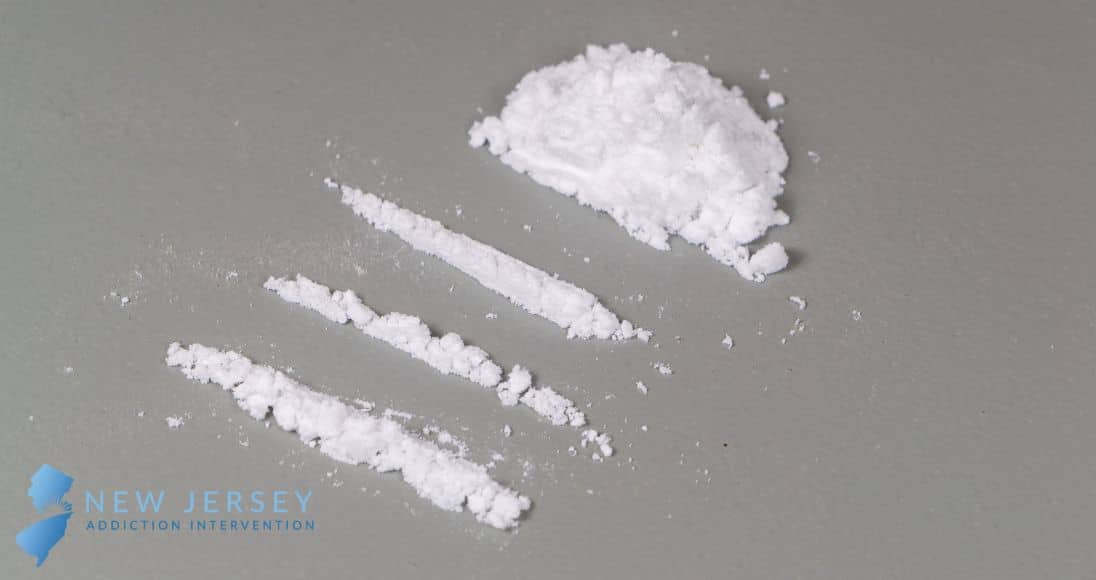Cocaine is a dangerous illicit drug. People may use cocaine to stay awake longer, have more energy, and feel euphoric. However, cocaine abuse can quickly spiral into an addiction.
The consequences of cocaine addiction can be severe. If you are worried that someone you love may be abusing cocaine, it can be helpful to know what cocaine looks, smells, and tastes like.
Cocaine can look, smell, and taste different depending on what form it is in. This guide will help you identify cocaine. You will also learn the signs of cocaine abuse and where to find cocaine addiction treatment.
Contact the New Jersey Addiction Interventions team to learn about our effective cocaine rehab programs. You may also set up an intake evaluation or verify your insurance.
What is Cocaine?
Cocaine is an illicit stimulant. It is an addictive drug. People derive cocaine from the leaves of the coca plant. This plant is native to South America.
Cocaine is widely available throughout the United States and the rest of the world. According to the National Institute on Drug Abuse (NIDA), about 1.4 million people over the age of 12 in the US were addicted to cocaine in 2021.
The Drug Enforcement Agency (DEA) classifies cocaine as a Schedule II drug. This means that it has the potential to be addictive.
Cocaine affects dopamine levels in the brain. Dopamine is a brain chemical involved in pleasure and reward.
Drugs that increase dopamine are highly addictive because people like the way they feel while taking them. They may want to take more. Over time, they may develop physical and mental dependence on it.
People who begin using cocaine and other addictive substances may need professional treatment to quit.
Effects of Cocaine
Cocaine use can change the way you think, feel, and act. Some of cocaine’s short-term effects include:
- More energy
- Higher blood pressure
- Faster heart rate
- Heightened senses
- Increased alertness
- Euphoria (intense happiness and well-being)
People may also experience unwanted or dangerous effects while using cocaine, including:
- Restlessness
- Irritability
- Agitation
- Vertigo
- Panic attacks
- Muscle twitches
- Psychosis
- Anxiety
- Violent behaviors
People who use cocaine a lot or take large amounts are more likely to experience unwanted or hazardous side effects. Using cocaine heavily or often can also cause people to develop tolerance. Tolerance occurs when a person’s body has adjusted to a substance.
People with tolerance to cocaine need to use more to get the effects they want. Over time, this pattern of heavy use can lead to physical dependence and addiction.
Cocaine addiction can damage a person’s physical and mental health. People with cocaine addiction must find treatment and ongoing support.
What Does Cocaine Look Like?
There are several types of cocaine. Each form of cocaine looks different.
The most common form of cocaine is a white powder. This is also known as cocaine hydrochloride. It may look like baking soda.
Another form of cocaine looks like a whitish crystal-like substance. There is also a form of cocaine that is a liquid.
Drug dealers may cut the powder form of cocaine with other ingredients, including talcum powder. This will not necessarily affect the way it looks.
What Does Cocaine Smell Like?
Pure cocaine often smells sweet. It may have a slight floral scent.
It can be challenging to identify cocaine by smell. People use several chemicals to extract cocaine hydrochloride from the coca plant leaves. These include:
- Gasoline
- Keroses
- Sulfuric acid
- Ammonia
- Diesel
- Carbonate salt
Many of these chemicals have a strong odor, which may affect the way cocaine smells. Cutting agents, such as talcum powder, laxatives, and laundry detergent, can also affect cocaine’s scent.
The way people use cocaine can also affect how it smells. Smoking crack, snorting powdered cocaine, and injecting a liquid will each produce different odors.
What Does Cocaine Taste Like?
The taste of cocaine can vary a lot. Typically, cocaine has a bitter or sour taste. However, additives and cutting agents can change the way cocaine tastes.
Cocaine is an anesthetic. This means that it has a numbing effect. Cocaine users may rub cocaine onto their gums or taste it before using it. This can help them determine the drug’s purity.
Tasting cocaine is not a safe method of cocaine identification. Never taste an unknown substance.
Find Cocaine Abuse Treatment
Cocaine addiction is a dangerous and complex condition. People who become addicted to cocaine need comprehensive, evidence-based treatment.
Treatment for cocaine addiction may include:
- Medically-supported detox services
- Individual therapy
- Group and family therapy
- Holistic treatments
- Relapse-prevention education
- Medications
- Mental health treatment
- Aftercare planning
Reach out to the New Jersey Addiction Interventions team to learn about our effective treatment programs. You may also verify your insurance or schedule an intake assessment.
Don’t wait another day for the help you need. Contact us now to begin your recovery journey.
Medically Reviewed: February 22, 2024

All of the information on this page has been reviewed and verified by a certified addiction professional.

